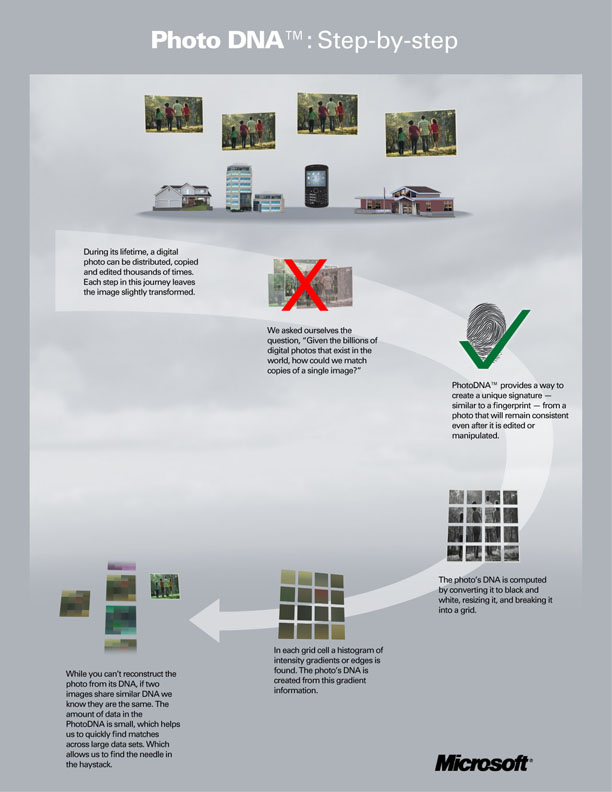When photos spread across the web, they’re often distorted and altered ever so slightly—think it a game of “telephone”—making it difficult for detection software to do its job. And as is the case, the propagation of photo sharing across the web has had an unfortunate side effect that’s quickly becoming an epidemic: a corollary rise in child pornography.
To show they’re serious about cracking down on offenses, Facebook will become the first company to utilize Microsoft’s advanced Photo DNA to catch illegal uploads. In December 2009, Microsoft donated the detection technology to the National Center for Missing & Exploited Children to stop the distribution of images in hopes that online services would adopt them.
And with over 600 million users, Facebook’s implementation of Photo DNA marks a giant—and necessary—stride in the right direction.
Earlier this week, Bill Harmon, the Associate General Council of Microsoft’s Digital Crimes Unit, wrote in their blog, “Today marks a significant milestone in the ongoing fight against the abuse of Internet technology for the heinous sexual victimization of the most innocent in our society.”
Photo DNA works by breaking images into different blocks, using a precise set of measurements to find illegal photos even if they’ve been resized, cropped or modified. Using a database of 10,000 images, Photo DNA has caught over 48 million child exploitation images and videos since 2002.
See a more detailed infographic of how Photo DNA works after the jump.
More on TIME.com:
Zuckerberg’s Going to China Again
Bottle Opener Concept Connects to Facebook and Invites People Over
Facebook Loosens Up Promotions Guidelines, Allows for Guns and Booze


